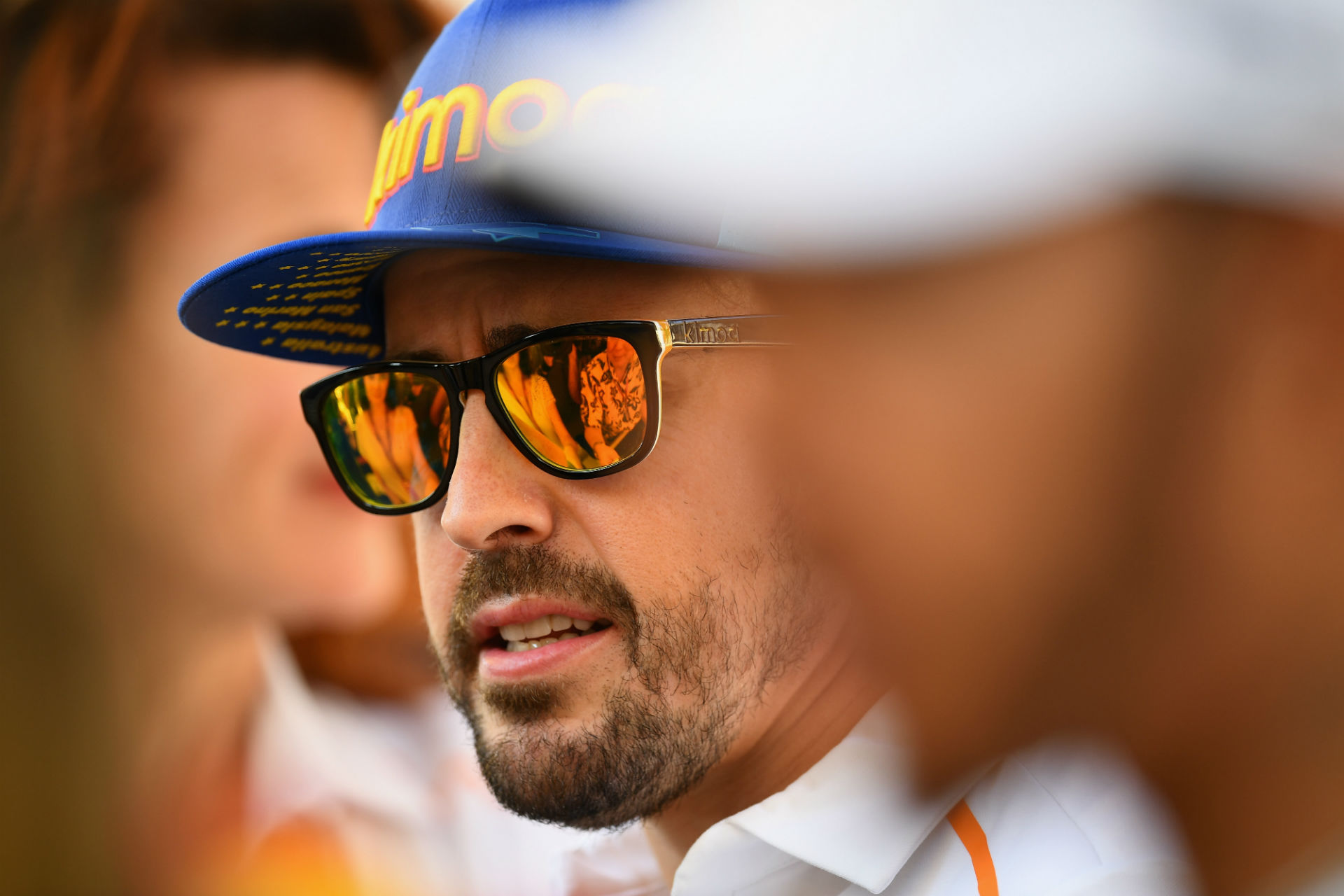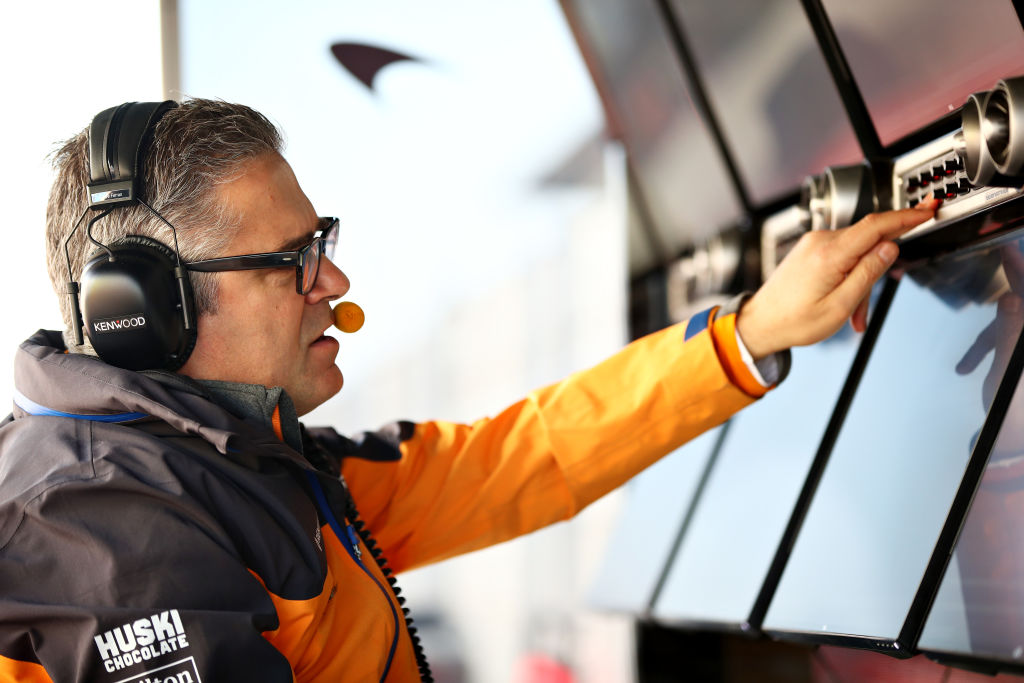

It’s become evident in the past decade that two-time Formula 1 world champion Fernando Alonso has turned into the master of “wrong place, wrong time.” After picking up his pair of titles with Renault in 2005 and ’06, the Spaniard took on the role of journeyman that, despite some undoubtedly respectable accomplishments, can’t seem to piece it all together, whether that be the fault of his own or whichever puzzled team he happened to be driving for. While storied accolades such as Monaco Grand Prix victories and a crossover triumph at last year’s 24 Hours of Le Mans would be enough for any other professional in chase of all-time greatness, one belt-notch has alluded Alonso, and that may be the straw that breaks the devilishly sharp, infinitely marketable camel’s back.
As you (probably) know, the illusory goal in question here is the Indianapolis 500—the race Alonso and McLaren’s purpose-built factory team failed to qualify for on Sunday.

The concept of ‘Nando being bumped wasn’t even a blip on the radar for those on the outside until he and his Woking, England-based team displayed signs of weakness during last week’s practice. Still, even after a sizable crash that led to McLaren equipping its spare car for running duty, it seemed a given that all would return to harmony as Alonso paced the field in the final practice before Saturday qualifying. However, his speed over the course of one lap simply didn’t translate to the average needed to keep up with his rivals on Pole Day.
Alonso would complete five disheartening qualifying runs in hopes of cracking the top 30, but the magic never did spark for the necessary four laps straight. This left Sunday’s Last Row Shootout as his final hope to join the Memorial Day Weekend classic’s 33-car grid.
But, infamously, Alonso couldn’t pilot his McLaren Chevy to safety and was, instead, bumped out of the field by Kyle Kaiser of Juncos Racing, perhaps the smallest and most grossly underfunded team in IndyCar—quite the contrast to the millions of dollars McLaren has poured in this year alone—or its hospitality tent.
Television cameras focused on Alonso during Kaiser’s run as he sat on the brink of elimination. The Juncos driver ran four neat and composed laps, eventually crossing the line and knocking Alonso and McLaren—both synonymous with success but, more recently, catastrophe—out by just two-hundredths of a mile per hour.
Alonso’s disappointment was understandably evident as he turned away from bystanders and headed for a moment of solitude.

He would, however, appear at a post-session press conference alongside the boss of McLaren’s Indy 500 program, Gil de Ferran. Surrounding the media obligation was an air of gutted glory that seeped into de Ferran’s responses to reporter questions, most notably one in which he apologized to Alonso for not providing a car worthy of taking the fight to his competitors.
“Last but not least, I want to thank this man here on my left, who—and I want to apologize to you, as well, because we didn’t give you a car that was fast enough. You drove like the champion that we know you are,” de Ferran said remorsefully.
“Particularly these last three days have been incredibly tense and very difficult, and we couldn’t have asked anything more from you, Fernando. So I’m sorry, man. You’re an amazing driver. In my 35 years of racing, actually a few more, this is the most painful experience I’ve ever had.
“There’s a mixture of emotions going on inside of me, but we are racers. We respect this place. This is one of the toughest challenges in racing. I want to come back tomorrow. I want to fight. I want to come back tomorrow and fight. This is incredibly painful.”

The situation bears an uncanny resemblance to Alonso’s final Formula 1 tenure with the McLaren team that brought tumultuous times and not a single podium finish during the last four seasons of his career in the series. Although, instead of remaining quiet as he did after Sunday’s emotional defeat, Formula 1 Alonso would often deliver subtle jabs that foreshadowed his eventual exit to drive elsewhere, in other forms of competition. Statements from McLaren Racing CEO Zak Brown plainly said that there was “zero tension” with Alonso, but the star driver’s body language and fiery flairs of emotion showed he was simply tired of disappointment.
While Alonso was moonlighting with Toyota in the World Endurance Championship and Wayne Taylor Racing in the 2019 Rolex 24, he was able to return to his winning ways. For the first time since his ’06 F1 championship, he found himself in the dominant car and on top of the team totem pole, allowing him to display his talents and reach the top step of the podium without second-guessing his equipment or those in charge on pit wall.
Now, though, he’s facing the same old issues, the same old anxieties. Alonso will have to wait until next year to try his hand at Indy once more in hopes of attaining motorsport’s Triple Crown, but if history is an indicator—which it often is—McLaren isn’t the team to do it with. Former glimmers of a full-time IndyCar campaign have likely fizzled at the hands of McLaren’s board and shareholders, and the crew was unable to prove itself capable of a successful one-off, no matter how much money it was handed.
Instead, the 37-year-old is better off with an established IndyCar team that will take him with all his fame and influence to finally claim what he recently described as the most important victory in his career. Put simply, it’s a matter of finding someone who’s willing to work with Alonso’s high standards and take-it-or-leave-it social status.
Problem is, who will that be?
